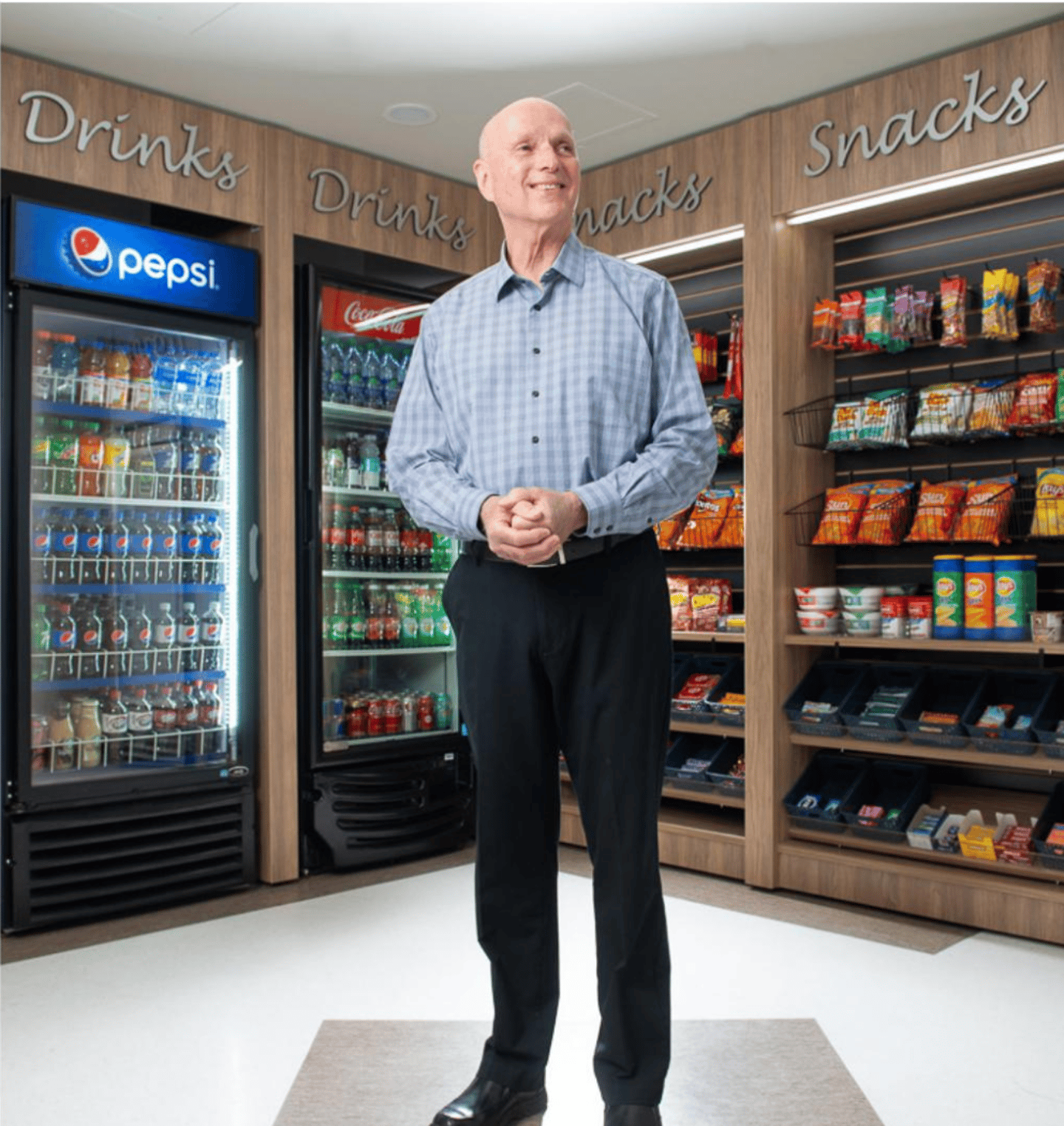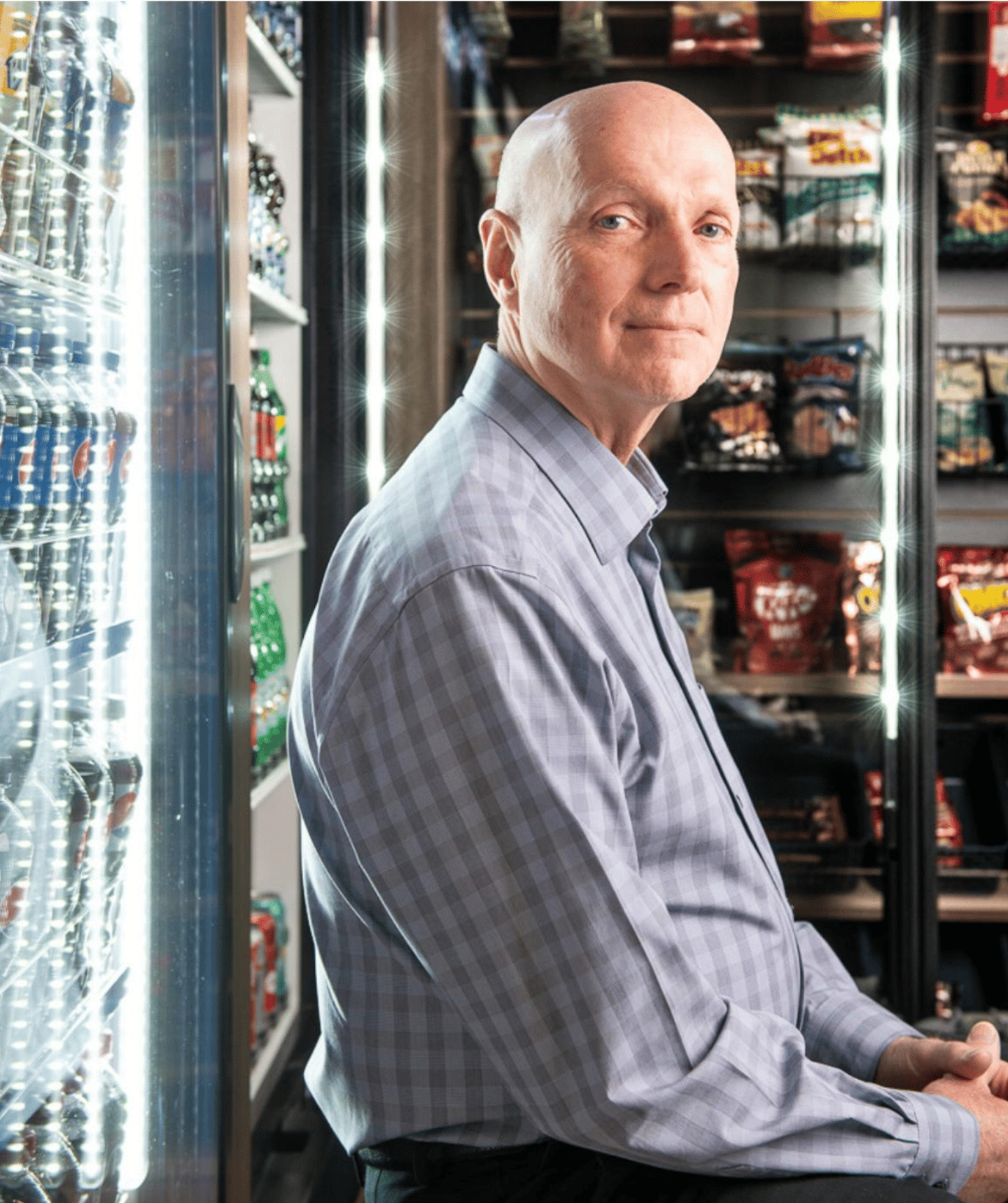Q&A: Canadian Automatic Merchandising Association president Jim Jackson talks micro markets and more
Jim Jackson, president of Winnipeg-based Quality Vending & Coffee Services, has been in the business for more than 40 years and during that time he’s seen massive shifts in automatic merchandising.
However, nothing could have prepared him for the most recent shake up.
After several years on the board at the Canadian Automatic Merchandising Association (CAMA), the industry veteran stepped into the role of president in March 2020—a time of extraordinary disruption across all industries, which resulted in the emptying of offices, schools shifting to online learning, a sharp decline in travel and the restricted access to spaces previously open to the public, such as hospitals.
In other words, it was a nightmare for those in the vending space: At the height of the pandemic, many of CAMA’s operators experienced a decline in sales of 50% or more. For two years, CAMA worked to support its members through unchartered territory, with the goal of ensuring the long-term success of the business. On the surface, convenience and vending are competitors, however, with the advent of technology and unattended markets, they also have a lot in common.
Convenience Store News Canada connected with Jackson to discuss how the pandemic impacted his industry, the importance of embracing technology, the rise of micro markets and why he’s optimistic about the future of automatic merchandising.
How has the pandemic shaped your industry?
JJ: It has been a long two years for our industry. Being in the business of providing food and beverage convenience services to businesses, our success has always been based on the success of our customers. The more employees they can keep within the four walls of their business, the greater the demand and need for our services. We all know that in the past two years, many businesses adopted a work from home approach and many manufacturing facilities worked with a reduced employee base or in some cases shut down entirely. It is simple to see how this would have a negative affect on our industry and that of many others that are in the business of providing services or support. Many of our operators saw their business decline more than 50%. This forced our operators to do a deep cleanse of their operation. They had the time to review and eliminate unnecessary expenses from their operations and adjust their employee needs to match the reduced workload and revenues.
You became president of CAMA in 2020, just as the world changed dramatically and many of your members were hit hard. How is the landscape different as we move out of the pandemic? Have a lot of your member businesses closed?
JJ: Many of the pandemic restrictions are being lifted and many of our customers have or are in the process of bringing employees back into the office. I would estimate that many operators are back to 80% of pre-pandemic sales numbers. The next 20% will require some time, possibly some diversification to their business portfolio and of course capitalizing on some new business opportunities. I am not aware of any members closing their business. We have all weathered the storm and hopefully the sailing will be smooth going forward.
How do things look moving forward?
JJ: Now that we are coming out of the pandemic and customers are starting to repopulate their offices and factories, our industry is faced with new challenges. These challenges show up in the form of labour shortages, supply chain issues and overwhelming increases to our cost of goods. It is hard to believe that with the number of people having lost their jobs in the past two years that we would be faced with a labour shortage, but it is real and has become a challenge for all industries. We are also experiencing delays in shipments of consumable products from many suppliers, as they are faced with shortages in raw ingredients and packaging for their production lines. Our operators are constantly scrambling to keep up with the ever-increasing cost of goods that we are receiving from our supply chain.
Moving forward our operators and suppliers are excited to start working towards getting their businesses back to a pre-pandemic level. This will take some time, patience and creativity, but we are optimistic that there is light at the end of the tunnel, and it is now in our view.
How are operators and manufacturers pivoting or rethinking their approach to meet changing consumer needs?
JJ: The biggest impact on our industry in the past few years is the growth of unattended retail or a concept known as micro markets. The growth and demand for this concept is still going full speed ahead. Employers love the idea of having a convenience store in their staff breakroom. Fresh food plays a big part in a micro market, as well as the availability and selection of products that do not fit in a traditional vending machine. Upscaled coffee programs are generally a part of the market experience and employees love the idea of not having to leave the office to get a gourmet beverage. The experience of self-checkout and the ability to pay with debit, credit or from a prepaid user account adds to the experience. Customers can also receive loyalty rewards and promotions on their purchases. Employers and staff appreciate the look of custom millwork that blends in with the aesthetics of the room décor as it makes for an inviting and relaxing place to visit and enjoy your coffee or lunch break experience.
Our suppliers are responding to the growth and demand for micro markets by focusing on equipment and product offerings that are required by the operators to fulfill and manage this growth in unattended retail.
On a personal note, how did you get into the business?
JJ: Quality Vending was founded in 1977 by my brother and his business partners. I joined the team as their first employee in 1979. I wasn’t just an employee; I was treated more like a partner. I played an integral role in the growth and success of the company and to many of our industry peers, I was the face of Quality Vending. In 2017 when the owners started talking about retirement… I had a conversation with my wife, Darlene, our children, and our accountant who is now our business partner, and we came up with a plan and an offer to purchase the business: We became the new owners of Quality Vending & Coffee Services in March of 2018. This decision to buy the company did not come without a vision for the future of the business, as it also included my own succession plan. Darlene and I have four children, and all of them had the opportunity to work summer jobs at Quality while they were going to school. Our oldest son, Jeremy, and our youngest son, David, took a liking to the vending and convenience service industry and expressed an interest in making a career in the industry as business owners: Both Jeremy and David have already become well known and respected amongst our network of operators and suppliers and will be leaders in the industry for decades to come.
45 years in, how has Quality Vending evolved to stay competitive?
JJ: I believe the key to our success has been working hard to be the best at what we do and having the vision to adopt new technology and take advantage of new opportunities as they are presented to our industry. Quality has a well-diversified portfolio of services and has become the one stop shop for our customers. We provide our customers with vending services, coffee services, pantry services, micro markets, water coolers, and equipment repair and service. We are also at the forefront of our industry in adopting new technology and concepts that will streamline the efficiency of our operation and provide our customers with the best user experience with our equipment. In 2012, Quality was one of the first companies in Canada to embrace the concept of the micro market and helped fuel the growth of micro markets in Canada.
What does the future hold for your industry? What are you particularly excited about?
JJ: I have a very positive outlook for the future of our industry. Our members are quick to adapt to the changing needs of our customers and the potential new business opportunities that the growth in unattended retail/micro markets has presented. It is very exciting to witness new technology that creates efficiencies in all aspects of our business and is revolutionizing our industry. Our industry will remain strong and exciting for generations to come.
Founded in 1953, the Canadian Automatic Merchandising Association (CAMA) represents the interests of vending operators, machine manufacturers, and product & service suppliers in Canada. In 2007 it blended with the Ontario Coffee and Vending Services Association (OCVSA) and today CAMA is focused on representing, supporting and enhancing the vending, office coffee and burgeoning micro market industries.
The 2022 CAMA Show is co-locating with The Convenience U CARWACS Show September 13-14, 2022 at The Toronto Congress Centre.
All CAMA delegates and exhibitors/sponsors will be given full access to The Convenience U CARWACS Show trade show floor.



